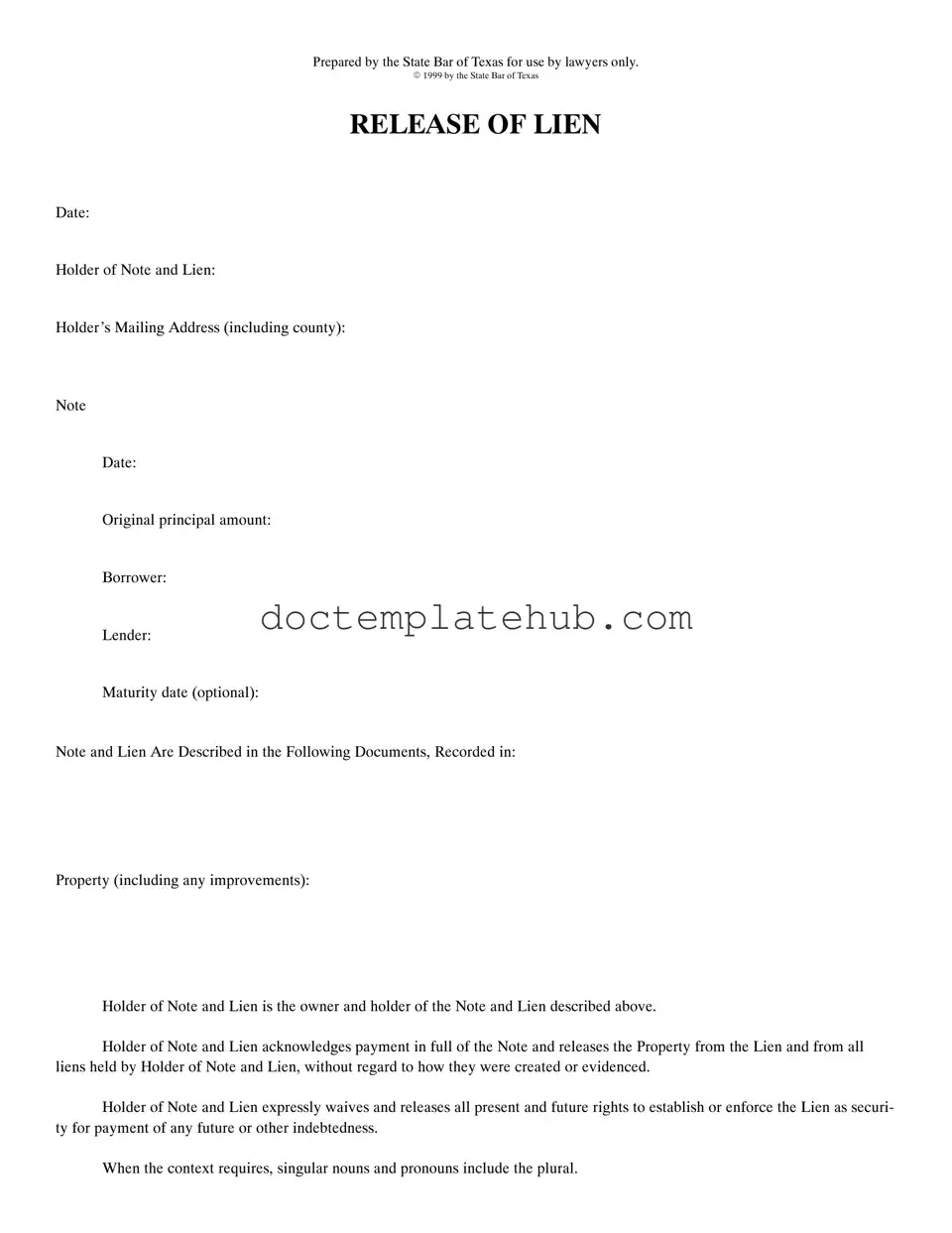What is a Release of Lien in Texas?
A Release of Lien is a legal document that officially removes a lien from a property. In Texas, when a borrower pays off a loan secured by a lien, the lender must acknowledge that the debt has been satisfied. This document serves as proof that the lender relinquishes their claim to the property, allowing the owner to have a clear title.
Who prepares the Release of Lien form?
The Release of Lien form is typically prepared by a lawyer. It's important to ensure that the document is completed correctly to avoid any potential legal issues in the future. While the State Bar of Texas provides a template, it is advisable to seek legal assistance for proper execution and recording.
What information is required to complete the form?
To fill out the Release of Lien form, you will need several key pieces of information. This includes the date of the release, the name and address of the lien holder, details about the note and lien, the original principal amount, the borrower's name, and the property description. Additionally, the form may require acknowledgment by a notary public to verify the identities of the parties involved.
What happens after the Release of Lien is filed?
Once the Release of Lien is completed and signed, it must be filed with the appropriate county clerk's office where the original lien was recorded. After filing, the lien is officially removed from the property records. This step is crucial, as it ensures that future buyers or lenders can see that the property is free from that particular lien.
Can a Release of Lien be contested?
Yes, a Release of Lien can potentially be contested. If there are disputes regarding the payment of the underlying debt or if the lien holder did not have the authority to release the lien, issues may arise. It's essential to keep all documentation related to the payment and release of the lien to address any challenges that may occur.
Is there a fee associated with filing a Release of Lien?
Yes, there is usually a fee for filing a Release of Lien with the county clerk's office. The amount can vary by county, so it's a good idea to check with the local office for the exact fee. Additionally, if you hire a lawyer to assist in preparing and filing the document, there may be legal fees involved as well.
What should I do if I lose my Release of Lien document?
If you lose your Release of Lien document, you can request a copy from the county clerk's office where it was filed. It's important to keep a copy of this document for your records, as it serves as proof that the lien has been released. If necessary, you may also consult a lawyer for further assistance in recovering or re-establishing the release.
